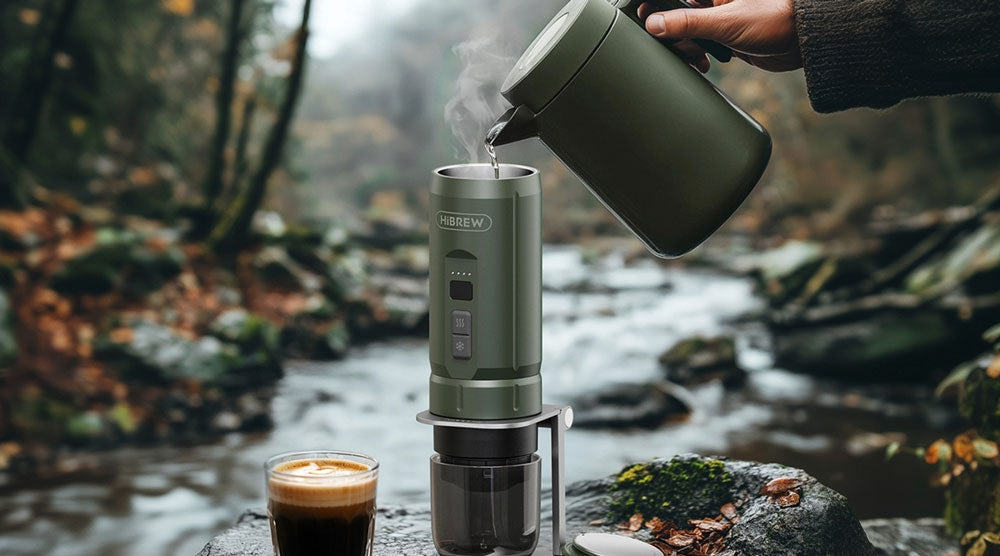A 3-way solenoid valve is a small but useful component that can significantly enhance your espresso-making experience, from the quality of your shots to the ease of your cleanup routine.
This article explores what a 3-way solenoid valve is, its importance, and how it can improve your home barista setup.
What Is a 3-Way Solenoid Valve?
A 3-way solenoid valve is a practical component in many high-quality espresso machines, designed to manage pressure and water flow during and after the espresso extraction process. This valve plays a critical role in three main stages:
-
Directing pressurized water to the group head during extraction
-
Releasing brew pressure from the portafilter immediately after brewing
-
Diverting excess water and pressure to the drip tray
Types of 3-Way Solenoid Valves
There are primarily two types of 3-way solenoid valves used in espresso machines:
1. E61 Brew Head Solenoid Valve
This type is integrated into the E61 group head, a classic design found in many high-end and prosumer machines. The E61 brew head with a solenoid valve offers precise control over water flow and pressure release.

2. Electric Solenoid Valve
These are standalone electric valves that can be incorporated into various machine designs. They offer similar functionality to the E61 integrated valves but allow for more flexibility in machine design and are often found in a wider range of espresso machines.

How Does a 3-Way Solenoid Valve Work?
When you start the extraction process, the three-way solenoid valve opens to allow pressurized water to flow through the coffee grounds.
Once you stop the shot, the valve quickly switches positions, cutting off the water supply and simultaneously opening a path for the remaining pressure in the portafilter to be released into the drip tray.
This rapid depressurization creates the characteristic "hiss" sound you hear after pulling a shot on machines equipped with this valve. This process has several important benefits for your espresso-making routine.
Benefits of 3-Way Solenoid Valves
1. Dry, Easy-to-Knock-Out Coffee Pucks
One of the most noticeable advantages of a 3-way solenoid valve is the resulting dry coffee puck after extraction. By quickly releasing pressure, excess water is drawn out of the portafilter, leaving behind a compact, dry puck that's easy to knock out.

2. Cleaner Extraction Process
The immediate pressure release provided by the 3-way solenoid valve helps prevent over-extraction. On machines without this valve, residual brew pressure can continue to force water through the coffee grounds even after you've stopped the shot, potentially leading to bitter flavors in your cup.
3. Safer Operation
The 3-way solenoid valve eliminates the risk of the "portafilter sneeze" by ensuring the portafilter is depressurized before you handle it, making your espresso routine safer and cleaner.
4. Consistent Extractions
By precisely controlling pressure throughout the extraction process, 3-way solenoid valves contribute to more consistent shots. You can accurately control the shot time since the extraction stops instantly after brewing without continuous dripping.

5. Enables Backflushing
An espresso machine with a 3-way solenoid valve usually allows for backflushing, an important maintenance procedure that helps keep your machine clean and functioning optimally.
How to Identify if Your Machine Has a 3-Way Solenoid Valve
There are a few ways to determine if your espresso machine is equipped with a 3-way solenoid valve:
- Listen for a distinct "hissing" sound after you stop the shot. This is the sound of pressure being released.
- Check if your coffee pucks are dry and easy to knock out shortly after extraction.
- Look for a separate tube leading to the drip tray, which is often used to divert released water and pressure.
-
Consult your machine's manual or specifications, which should list this feature if present.
Coffee Machines with 3-Way Solenoid Valves
Many prosumer-level espresso machines come equipped with 3-way solenoid valves as standard. This feature is often found in higher-end or commercial espresso machines, providing a more professional-level espresso experience. Some mid-range machines have also started incorporating this technology, bringing advanced functionality to a broader audience.
HiBREW has made significant strides in bringing this professional-grade feature to entry-level machines. HiBREW H10 Plus, H7B espresso machine with grinder, and the latest H13 espresso machines all feature 3-way solenoid valves, offering advanced functionality at a more accessible price point.
Considerations for Home Baristas
For home baristas serious about their espresso, a machine with a 3-way solenoid valve is often considered a worthwhile investment. While traditionally found in higher-end machines, the inclusion of this technology in more affordable models like those from HiBREW is making professional-grade espresso more accessible to home baristas.



Dejar un comentario
Todos los comentarios se revisan antes de su publicación.
Este sitio está protegido por hCaptcha y se aplican la Política de privacidad de hCaptcha y los Términos del servicio.